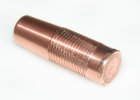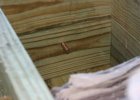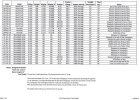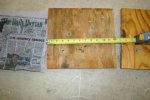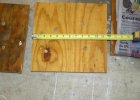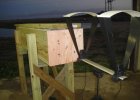Phil,
Velocity and its relation to penetration with solids is always an interesting subject.
Some old timers felt better penetration was realized at lower velocities. I believe this was borne from shooting inferior solids that would mushroom or bend at higher velocities.
My initial velocity tests were suprising. I was expecting a big difference in penetration. As you noted there was very little.
Now I am going to steal a quote from a buddy from another forum
A thought about boards (linear function resistance, LFR) mixed in with waterbuckets, wetpack, or SIM-TEST (exponential function resistance, EFR) as regards to response to velocity of the penetrating bullet and loss of resolving power of the test medium: LFR on the entrance end of the SimBA (simulated buffalo apparatus) contrbutes little to stopping the bullet, relative to its effectiveness in halting the bullet in the terminal/low velocity end of the SimBA. EFR provides much more resistance on the high velocity end, and less on the terminal end, thus allowing better resolution of difference in penetration, rather than having the LFR stop two close competitors at the same apparent distance, "hitting the wall." Rip
I came back and changed the test to place more resistance at higher velocity (front of the wetpack) and the results were more of what I expected.
Bear in mind newspaper, wood, water, cinder blocks, etc are consistent. We use them to compare different bullets in the same media. Animals are very inconsistent; bone, muscle, tendons, meat, elephant skull, etc etc. I prefer to design tests to take in the worse case for the bullets.
I find these things fascinating. It gives me something to do besides shooting and hunting while planning my next safari. As far as feeding problems my go to big gun is a double and it regulates fine with the North Forks and BBWs. My 375 CZ 550 was reworked by AHR and it feeds everything flawlessly. They all receive a severe workout months prior to leaving for Africa.
These are the results from the test with the higher resistance in the front of the wetpack. Velocity wins out!
Caliber: 470 Nitro Express
Rifle: Krieghoff Double
Twist Rate: 1 in 18.9 Confirmed by Krieghoff
Brass: Jamison
Primer: Remington 9 1/2M
Powder: Reloder 15 for standard velocity load (approximately 2100 fps)
AA 5744 for reduced loads (approximately 1650 FPS)
The test box is fabricated from 2 by 6 pine boards and is 72” long.
Test media consisted of ¼” luan, 12” of saturated newspaper, 2 by 6 treated pine (shooting through the 1 5”8” thickness), an approximate 1 ¼” void and then a series of twelve pieces of ¾” plywood with ten saturated newspapers 20 pages each between each piece of plywood (plywood, newspaper, plywood, newspaper etc) and approximately 33” of saturated newspaper to fill the box. Great care was taken to make certain the newspaper was thoroughly soaked in a tub prior to placing in the test bed.
After placing the paper in the test bed excess water was permitted to drain for 30 minutes.
The bullet entered the box at 32 feet from the muzzle.
Bullets tested:
North Fork 500 Grain solid
Bullet Length: 1.414”
Bullet Meplat: .335” or 70.67% of diameter
Test consisted of firing consisted of firing two North Fork bullets in the test media at standard Nitro velocity and two North Fork bullets at reduced velocity.
Reduced Velocity:
Average impact velocity of the was 1672. The first round stopped in the 11th piece of plywood. Total penetration was approximately 38”. The second round stopped between the 11th and 12th piece of plywood. Total penetration was approximately 39”.
The two bullets fired at standard Nitro velocities penetrated through all of the plywood and approximately 21” more than the lower velocity rounds for a total of 60".
Penetration was usual for the North Fork bullets, perfectly straight.
The picture above is the first piece of plywood the bullets penetrated. Note the location of the holes.
The picture above is the 11th piece of plywood the bullets penetrated. Note the location of the holes as they relate to the first picture.
This is where the standard Nitro velocity rounds stopped. You can barely see the bullet in the top hole above the very visible bullet. Again note the location of the holes after traveling through another 21” of wet newspaper.



